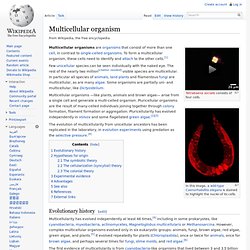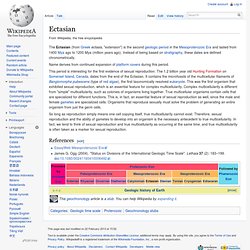

Sexual reproduction. Sexual reproduction is a process that creates a new organism by combining the genetic material of two organisms.

It occurs both in eukaryotes[1][2] and prokaryotes:[3] in multicellular eukaryote organisms, an individual is created anew; in prokaryotes, the initial cell has additional or transformed genetic material. In a process called genetic recombination, genetic material (DNA) originating from two different individuals (parents) join up so that homologous sequences are aligned with each other, and this is followed by exchange of genetic information. After the new recombinant chromosome is formed, it is passed on to progeny. Sexual reproduction is the primary method of reproduction for the vast majority of macroscopic organisms, including almost all animals and plants. Multicellular organism. Few unicellular species can be seen individually with the naked eye.

The rest of the nearly two million[citation needed] visible species are multicellular. In particular all species of animals, land plants and filamentous fungi are multicellular, as are many algae. Ectasian. Name derives from continued expansion of platform covers during this period.

So long as reproduction simply means one cell copying itself, true multicellularity cannot exist. Therefore, sexual reproduction and the ability of gametes to develop into an organism is the necessary antecedent to true multicellularity. In fact, we tend to think of sexual reproduction and true multicellularity as occurring at the same time, and true multicellularity is often taken as a marker for sexual reproduction. Bangiomorpha.